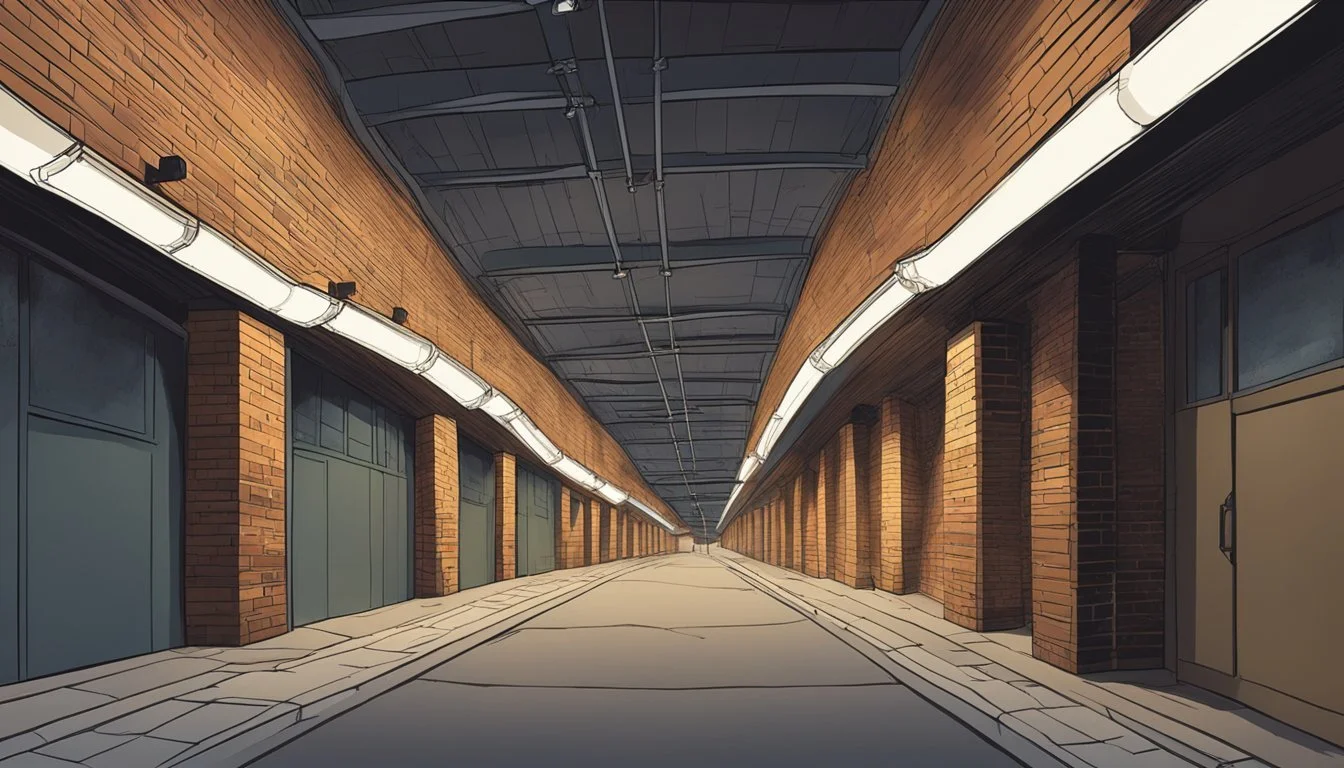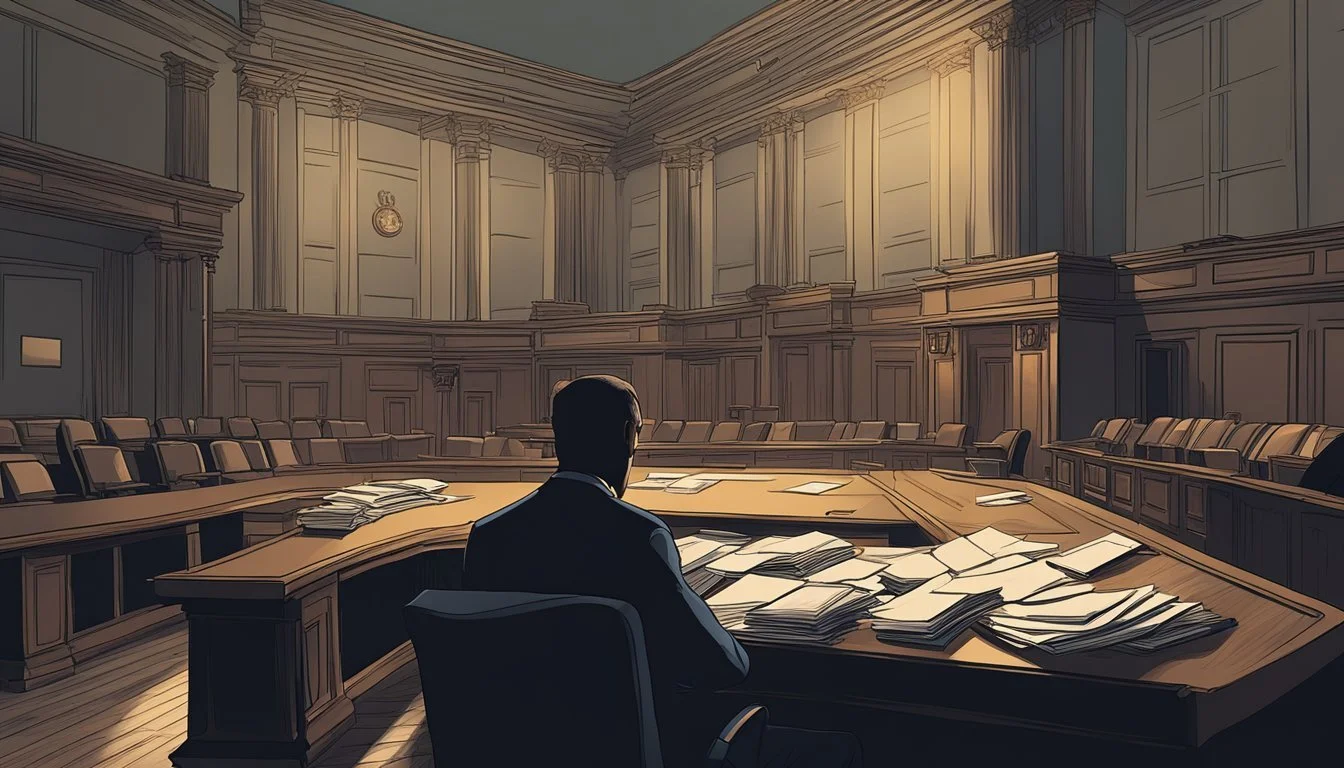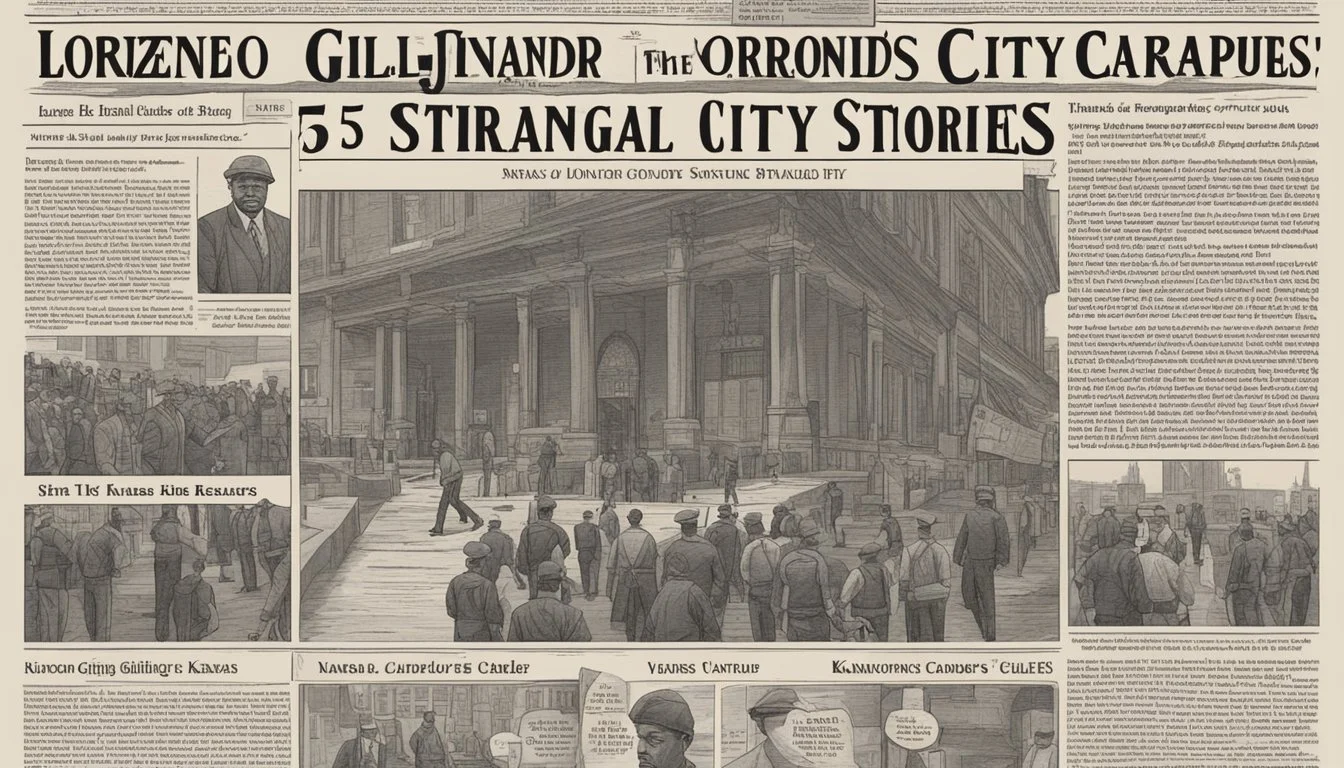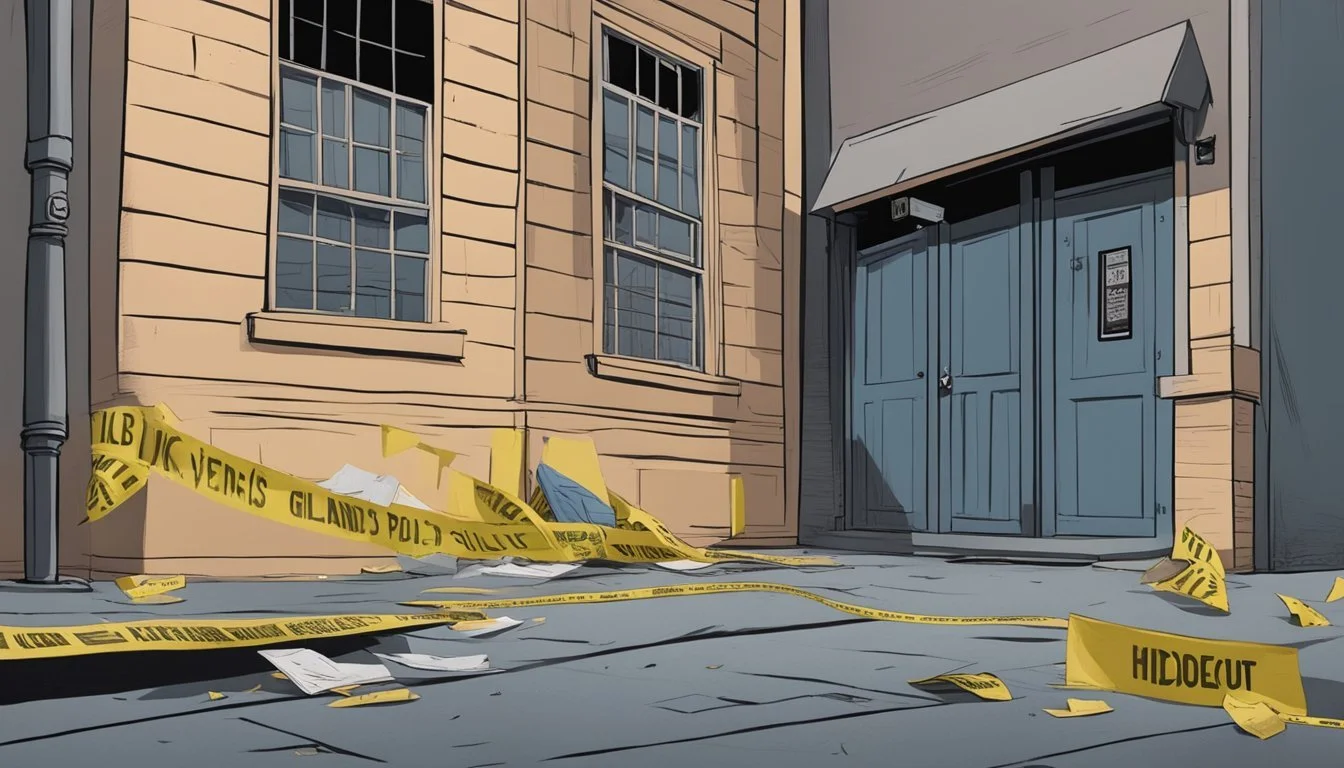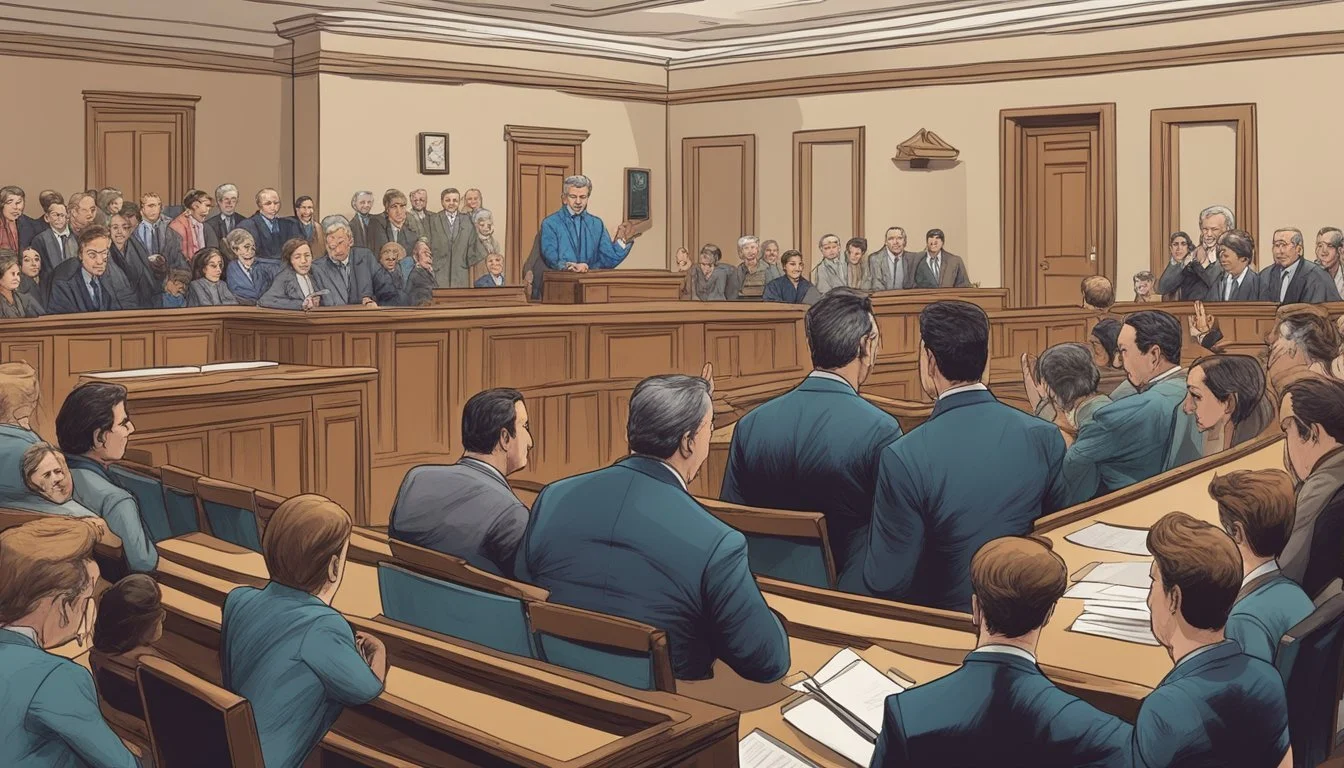Lorenzo Gilyard: 5 Kansas City Untold Stories Finally Revealed After the Strangler's Capture
Shocking Details Emerge Decades Later
Lorenzo Gilyard, known as the Kansas City Strangler, terrorized Missouri's largest city for over a decade. From 1977 to 1993, he committed a series of brutal murders that left the community in fear and law enforcement struggling to catch the elusive killer. His capture in 2004 finally brought closure to many families and revealed untold stories of his victims.
The case of Lorenzo Gilyard captivated true crime enthusiasts and sparked numerous documentaries and investigations. While much has been reported about his crimes and eventual conviction, there are still lesser-known aspects of the case that have remained hidden until recently. These newly uncovered stories provide fresh insights into the impact of Gilyard's actions on Kansas City and the lives he forever changed.
1) The Mysterious Disappearance of Jessica Brown
Jessica Brown, a 19-year-old college student, vanished without a trace on October 15, 1991, in Kansas City. Her disappearance baffled investigators for years, with no leads or suspects identified.
Brown was last seen leaving her part-time job at a local diner around 11 PM. Her car was found abandoned in a parking lot two days later, with no signs of struggle or foul play.
The case remained cold until Lorenzo Gilyard's arrest in 2004. Detectives revisited Brown's disappearance, noting similarities to Gilyard's known victims. However, no concrete evidence linked him to the case.
Despite extensive searches and public appeals, Jessica Brown's whereabouts remain unknown. Her family continues to seek answers, hoping for closure in this perplexing case.
The mystery surrounding Brown's disappearance highlights the challenges faced by law enforcement in solving cold cases. It serves as a reminder of the lasting impact of unsolved crimes on families and communities.
2) The Secret Tunnel Beneath Main Street
Kansas City harbors a hidden piece of history beneath its bustling streets. The 8th Street Tunnel, located at the intersection of Eighth and Washington, lay forgotten for four decades.
This subterranean passage once served as a vital transportation link in the city's early days. Built in the late 19th century, it allowed streetcars and pedestrians to navigate the steep terrain of the area.
The tunnel fell into disuse as transportation methods evolved. It was eventually sealed off and faded from public memory. Many Kansas City residents were unaware of its existence for years.
Rediscovery of the tunnel sparked interest in the city's underground history. Urban explorers and history enthusiasts have since sought to document and preserve this hidden landmark.
The 8th Street Tunnel stands as a testament to Kansas City's engineering past. It offers a glimpse into the city's early infrastructure and the challenges faced by its builders.
3) A Reporter's Confession: The Cover-Up
A local Kansas City reporter came forward with a startling revelation years after Lorenzo Gilyard's arrest. The journalist admitted to withholding crucial information during the initial investigation.
The reporter claimed to have received an anonymous tip about Gilyard's potential involvement in the murders. However, fearing for their safety and career, they chose not to share this information with law enforcement.
This decision potentially delayed Gilyard's capture, allowing him to continue his killing spree. The reporter's confession shed light on the ethical dilemmas faced by journalists in high-profile criminal cases.
The revelation sparked a debate about the responsibility of media professionals in criminal investigations. It also raised questions about the potential impact of unreported leads on the course of the investigation.
The reporter's admission led to an internal review at their news organization. New guidelines were implemented to ensure proper handling of sensitive information in future cases.
This confession underscored the complex relationship between media and law enforcement in criminal investigations. It highlighted the importance of balancing journalistic integrity with public safety concerns.
4) The Hidden Crimes of the City Council
While Lorenzo Gilyard's crimes shocked Kansas City, they inadvertently exposed a web of corruption within the local government. Several city council members were implicated in various illegal activities during the investigation into Gilyard's murders.
Two councilors faced charges for accepting bribes from local businesses in exchange for favorable zoning decisions. These bribes amounted to hundreds of thousands of dollars over several years.
Another council member was found to have embezzled funds from a community development project. The money was intended for neighborhood revitalization but instead lined the pockets of this elected official.
A fourth councilor was discovered to have ties to organized crime. This individual had been leaking sensitive information about police operations to criminal organizations in the area.
These revelations came to light as detectives combed through records and interviewed witnesses connected to Gilyard's case. The exposure of these hidden crimes led to multiple resignations and criminal charges against the involved council members.
The scandal shook public trust in local government and prompted calls for increased transparency and oversight in Kansas City's political system. It demonstrated that sometimes the pursuit of justice can uncover wrongdoing in unexpected places.
5) The Unseen Impact on Kansas City's Tourism
The capture of Lorenzo Gilyard, known as the Kansas City Strangler, had unexpected consequences for the city's tourism industry. While crime stories often generate morbid curiosity, this case had a chilling effect on visitor numbers.
Hotels reported a noticeable decrease in bookings in the months following Gilyard's arrest. Tour operators saw cancellations for trips to Kansas City, particularly from groups and families.
Local businesses that relied on tourism experienced a temporary downturn. Restaurants, shops, and attractions in popular areas like the Country Club Plaza saw fewer customers.
The city's convention center also felt the impact. Several organizations chose alternative locations for their events, citing safety concerns among attendees.
Kansas City's tourism board worked to counter negative perceptions. They launched campaigns highlighting the city's cultural attractions, jazz heritage, and culinary scene to help restore visitor confidence.
Gradually, tourism numbers began to recover. The city's efforts to rebrand itself and focus on positive aspects helped attract visitors back to Kansas City.
Early Life and Background of Lorenzo Gilyard
Lorenzo Jerome Gilyard Jr. was born on May 24, 1950, in Kansas City, Missouri. His upbringing in a violent household and early behavioral patterns would later become subjects of scrutiny following his arrest as the Kansas City Strangler.
Family and Childhood
Gilyard grew up in a turbulent family environment. His father and siblings had criminal records, including convictions for violent crimes. This exposure to criminal behavior at a young age likely influenced his future actions.
Gilyard's childhood was marked by instability and lack of positive role models. The family's history of violence created a challenging atmosphere for his development. Despite these circumstances, little is known about Gilyard's educational background or early relationships outside his immediate family.
Early Signs and Behavioral Patterns
As a youth, Gilyard exhibited troubling behavior that hinted at future problems. His interactions with peers and authority figures were often difficult, suggesting underlying issues with anger management and social adjustment.
Gilyard's early employment history included a job at a trash company. This work provided him with knowledge of secluded areas around Kansas City, which he would later use in his crimes.
While specific incidents from his youth are not well-documented, law enforcement later noted that Gilyard's criminal activities began in his late 20s. This timeline suggests a gradual escalation of antisocial behavior throughout his early adulthood.
Investigation and Capture
The Kansas City Strangler case baffled investigators for years until DNA evidence finally cracked the mystery. Advanced forensic techniques, persistent detective work, and community cooperation played crucial roles in bringing Lorenzo Gilyard to justice.
The Breakthrough in the Case
In 2004, cold case detectives revisited unsolved murders from the 1980s and 1990s. They reexamined DNA evidence using new technology unavailable at the time of the crimes. This led to a match with Lorenzo Gilyard's DNA profile, which was in the system due to a previous arrest.
The breakthrough linked Gilyard to six murders initially. Investigators quickly expanded their search, connecting him to additional victims through DNA and other forensic evidence.
Law Enforcement Techniques
Detectives employed a range of techniques to build their case:
DNA analysis of crime scene evidence
Forensic fiber analysis
Victim profile comparison
Witness interviews and re-interviews
Timeline reconstruction
They also used geographic profiling to identify patterns in the locations where bodies were discovered. This helped narrow down potential areas where the killer might have lived or worked.
Community Impact Before and After Capture
Before Gilyard's arrest, fear gripped Kansas City's vulnerable communities. Sex workers and young women were particularly at risk. The police increased patrols and warned residents to stay vigilant.
After his capture, a sense of relief washed over the city. Victim support groups reported increased attendance at meetings. Many felt they could finally begin healing.
The case highlighted the importance of community cooperation with law enforcement. It also sparked discussions about protecting marginalized groups and improving safety in high-risk areas.
Legal Proceedings and Sentencing
Lorenzo Gilyard faced justice for his heinous crimes in a high-profile trial that captivated Kansas City. The legal process revealed crucial evidence, dramatic courtroom moments, and elicited strong reactions from the public.
Key Evidence Presented
DNA evidence played a pivotal role in Gilyard's trial. Prosecutors presented genetic material linking him to multiple victims. Crime scene samples collected years earlier matched Gilyard's DNA profile.
Physical evidence included fibers and hair samples found on victims' bodies. These were consistent with materials from Gilyard's home and vehicle.
Investigators also presented a pattern of strangulation and body disposal methods unique to Gilyard's crimes. This helped establish his modus operandi across multiple murders.
Trial Highlights
The trial lasted three weeks, with prosecutors calling 44 witnesses. Gilyard maintained his innocence throughout the proceedings.
Several survivors testified, providing emotional accounts of their encounters with Gilyard. Their testimonies painted a chilling picture of his predatory behavior.
The defense argued that DNA evidence alone was insufficient to prove guilt. They questioned the reliability of decades-old forensic techniques.
Gilyard chose not to testify in his own defense. This decision sparked debate among legal experts about its impact on the jury.
Public Reaction
The trial drew intense media coverage, with daily updates on local and national news. Many Kansas City residents expressed relief that the long-unsolved cases were finally reaching a resolution.
Victims' families attended the trial, often wearing buttons with photos of their loved ones. Their presence served as a powerful reminder of the human toll of Gilyard's actions.
Some community members organized vigils outside the courthouse to show support for the victims and their families. These gatherings highlighted the lasting impact of Gilyard's crimes on the community.



